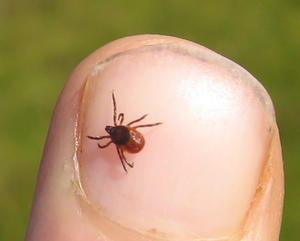
Cats and ticks
Ticks are common in woodland, grassland and heath areas and will be more prevalent between spring and autumn. Although they don't jump, they will drop or climb onto your cat.
Cat ticks are spider-like, egg-shaped, blood-sucking creepy crawlies. They have six to eight legs (depending on their life stage) and vary in size from about 1mm to 1cm long. Adult ticks look a bit like small spiders.
Ticks don't fly or jump, but climb or drop on to your cat's coat when they brush past the area they are sitting in. If they fall or climb onto your cat, they will attach themselves and feed on their blood. Once they have had enough, they drop off. They are rarely dangerous to cats, but can pass on bacteria and microbes when they bite, so we recommend preventative treatment or removing them.
How do I know if my cat has a tick?
After feeding, ticks are big enough to spot and feel like a small bump on your pet's skin. Run your hands over your cat's body when they come in for dinner each evening to check for any small lumps or bumps. They tend to attach themselves to areas around a cat's head, neck, ears and feet. Brushing also helps to remove them.
How to remove cat ticks safely
Twisting them off your cat is the best removal method, and pet shops sell handy tick-removal devices to make this easier.
You need to be careful not to squeeze the tick's body, or allow its head to get stuck inside your cat. Squeezing a tick's body can cause it to expel blood back into your pet, increasing the risk of infection. Ask your vet for advice if you're worried about doing this.
- Once you've located the tick, using gloves if you have them, gently part your cat's fur so that you can easily reach the tick
- Get your tick remover and slowly push it under the tick's body, flat with your cat's skin
- When you have a firm grasp of the tick, twist it in a clockwise direction several times until the tick comes loose
- Take a look at your cat's skin and make sure the tick is completely removed
- Wash the area with some pet-friendly soap and water
- Get rid of the tick by putting it in alcohol or popping it in tissue and flushing it down the toilet before washing your hands
Ticks carry diseases, so it’s important to remove any that attach themselves to your cat as soon as possible.
Important
Never use your fingers to crush a tick.
Why should I protect against ticks?
Ticks transmit microbes that cause diseases, such as Lyme disease and babesiosis.
If you live in an area with ticks, it’s a good idea to use a tick treatment that will either repel ticks or kill them quickly if they attach. The longer the tick is attached, the greater the risk of your cat catching a disease. Spot on treatments, tablets and collars are available and it’s best to consult your vet about which is most suitable for your pet.
Important
Never apply a tick treatment made for dogs on your cat. Some dog products may be lethal if used on cats.
Lyme disease in cats
Lyme disease is a serious bacterial infection that is spread by ticks. It's very rare for cats to get Lyme disease in the UK, and many recover quickly with treatment. However, as Lyme disease can be more serious in dogs and humans, we still recommend using a preventative spot on treatment.
Symptoms of Lyme disease in cats
- Lethargy or tiredness
- Loss of appetite
- Lameness or sore or stiff joints
If you think your pet has Lyme disease, contact your vet. They can perform tests and start treatment with antibiotics which in the majority of cases will lead to a full recovery.
What is babesiosis and does it affect cats?
Babesiosis is extremely rare in the UK and the tick that spreads it is so far only found in southern England and on the continent. It affects dogs, but is not thought to affect cats or other animals and is not a risk to humans.
The first cases of dogs being treated for the disease, caused by the bacterium Babesia, were reported in March 2016. Other confirmed cases of babesiosis in Essex have been caused by the Babesia canis strain. Despite not being an immediate concern for cats, we would still recommend removing ticks as soon as possible.
Tick-borne encephalitis
Tick-borne encephalitis can be found is some species of tick in the UK. It is extremely rare in dogs, and even rarer in cats. People can also contract tick-borne encephalitis. It is still extremely rare, but can be a serious illness.
Important
Symptoms can include a high fever with headache, neck stiffness, confusion or reduced consciousness. If you feel unwell after being bitten by a tick, you should follow the NHS’s advice.
Page details
Reviewed
• 3 May 2023
Next review
• 2 May 2026









